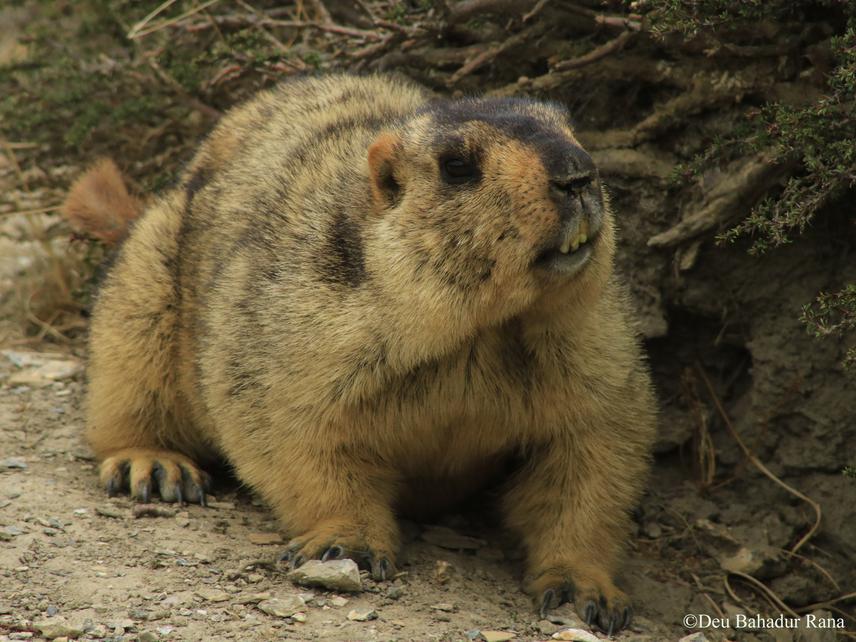Deu Bahadur Rana
Himalayan wolf (Canis lupus chanco) is one of the least known and reintroduced carnivore in Central Himalayas of Nepal. Retaliation for livestock depredation acts as one of the major issues in disappear of the species. The project focused on to sketch the occupancy modelling and map suitable potential habitat; assess the status and intensity of human-wolf conflict concerned with livestock depredation and awareness raising campaign on wolf conservation. To understand local ecological knowledge and status of wolf herdsmen, conservation staffs, local community and students will be kept in main concerned to accomplish the project effectively. The fundamental goal of this study is to provide the baseline information for the conservation and specific management plan of the wolf to the local authorities and government.

Himalayan Marmot, ACAP, Nepal.
Annapurna Conservation Area (ACA) is highly potential and domineering ecological habitats for wildlife and floral diversity. The Wolf (Canis lupus chanco) is listed “Critically endangered” in IUCN red data of Nepal and is under protection of National Parks and Wildlife Act 1973 whereas listed as “Least concern” globally. The abundance of wolf ranges throughout the Nepalese Himalayas. Conversely, in ACA the presence of wolf is recorded since its long decade disappear. The retaliatory killing against the livestock depredation by herdsmen, the immoral belief, and lack of prey deficiency are the major cause in wolf population decline. Earlier, there was high degree of conflicts with the local and herdsmen, which can be noticed as alike recently with the snow leopard in study area. Thus, we can predict that threats could occur in near future; though it is very challenging to address all the factors of wolf in Nepalese context due to the limited study.
Local ecological knowledge of herdsmen and conservation staffs are the main source for locating presence and absence of wolf in the occupancy grid. Sign survey will be conducted, after the primary reconnaissance and responses of locals to collect evidence of wolf population through pugmarks, scratch marks, scats, livestock depredation in the area etc. Besides this direct observation through the vantage point scanning using binocular and good range monocular will be conducted. The vantage point sighting will allow identification of the individuals and or packs, which will help to determine its composition. Based on the local sighted information in the grazing land, livestock depredation recorded in conservation office and personal communication with the conservation staffs have confirmed the presence of wolf does exist thought the population is undermined. Since the main objective of this study is to assess the occupancy distribution and conservation conflict assessment in the region, I will use only the presence approach in MaxEnt to predict the potential suitable habitat for wolf.
In context with inadequate detail assessment on the wolf; emphasizing the occurrence of the species, minimizing the conflict through the scientific mean and conservation of the large ungulates including their prey preference is one important outcomes of this study. Results in this study will instrumental as benchmarks to the planners, conservationist, decision makers and scientific researcher in near future in conservation, protection and management of those rare and threatened species.